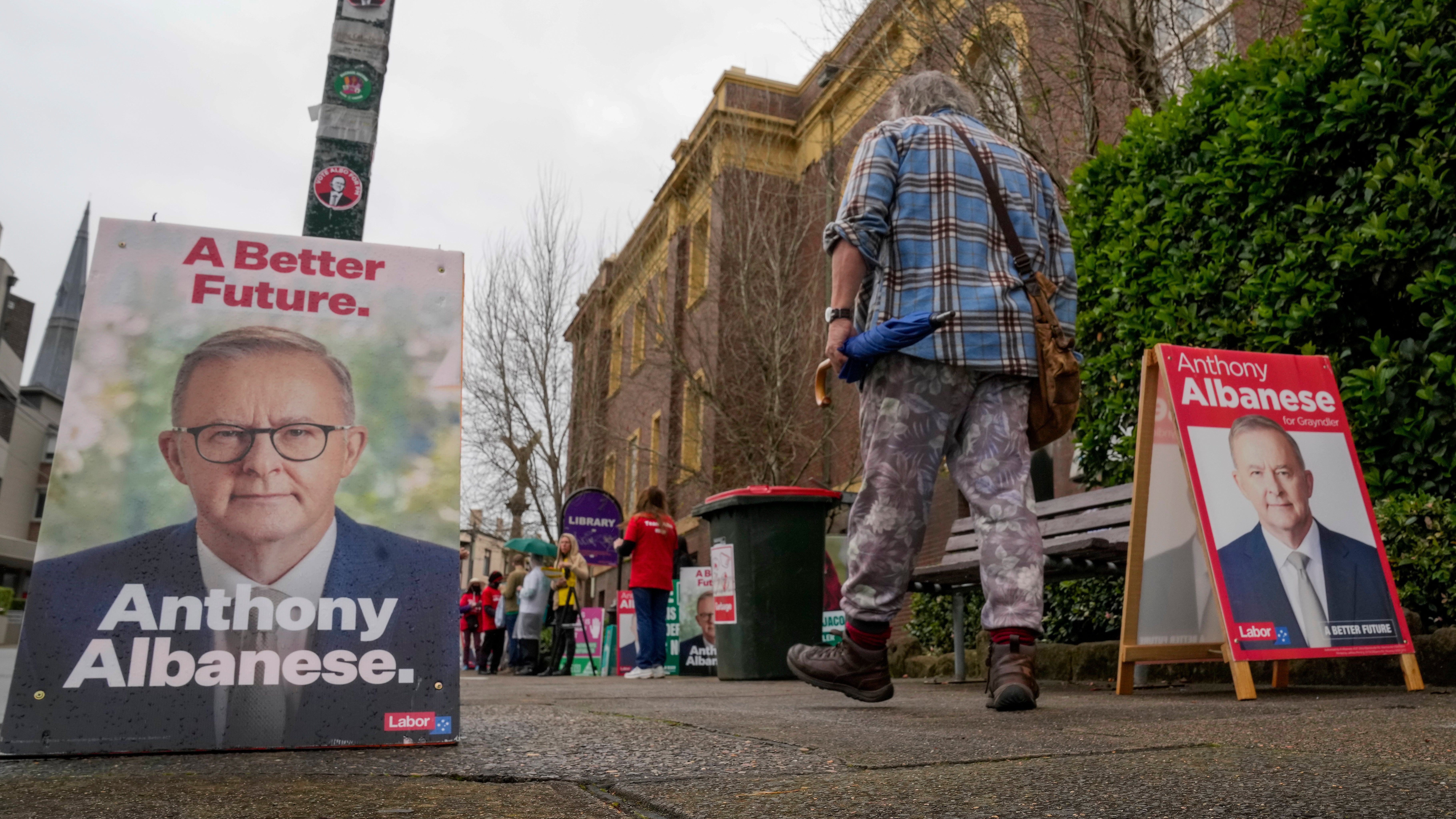Australia election 2022: How does the process work?
Australians vote Saturday to elect their 47th Parliament since federation in 1901 and will likely either return Prime Minister Scott Morrison’s conservative coalition for a fourth three-year term or make opposition leader Anthony Albanese the nation’s 31st prime minister

Your support helps us to tell the story
From reproductive rights to climate change to Big Tech, The Independent is on the ground when the story is developing. Whether it's investigating the financials of Elon Musk's pro-Trump PAC or producing our latest documentary, 'The A Word', which shines a light on the American women fighting for reproductive rights, we know how important it is to parse out the facts from the messaging.
At such a critical moment in US history, we need reporters on the ground. Your donation allows us to keep sending journalists to speak to both sides of the story.
The Independent is trusted by Americans across the entire political spectrum. And unlike many other quality news outlets, we choose not to lock Americans out of our reporting and analysis with paywalls. We believe quality journalism should be available to everyone, paid for by those who can afford it.
Your support makes all the difference.Australians vote Saturday to elect their 47th Parliament since federation in 1901 and will likely either return Prime Minister Scott Morrison’s conservative coalition for a fourth three-year term or make opposition leader Anthony Albanese the nation’s 31st prime minister.
If neither of the two major parties can secure a majority of seats in the House of Representatives, the leaders will have to negotiate with unaligned lawmakers to form a minority government. This has happened only once since World War II. Here are some facts about the Australian election.
WHY IS VOTING COMPULSORY?
Australia’s political system is unusual in that voting is compulsory. Voter turnout is consistently high despite the fine for failing to vote being a token 20 Australian dollars ($14).
Compulsory voting was introduced in 1924 because public apathy toward elections in the first two decades of federation cast doubt on the legitimacy of results.
The system means that voter turnout is high even when many aren’t particularly attracted to any candidate.
There are 17.2 million people registered to vote in Saturday's election, which is 97% of eligible adult citizens among Australia's total population of 26 million. In the last election in 2019, 92% of registered voters cast ballots.
HOW DO AUSTRALIANS VOTE?
Because voting in compulsory, the Australian Electoral Commission goes to some effort and expense to make the process convenient with more than 7,000 polling centers around the country.
The commission expects this election will cost AU$400 million ($281 million), plus around AU$70 million ($49 million) that will be distributed to political parties based on how many votes they attract. A temporary staff of 105,000 employees has been hired.
Government regulations were changed on Friday to enable people who have recently tested positive for COVID-19 to vote by phone.
More than 40% of votes were cast early or by post in the 2019 election and the proportion is on track to exceed 48% in the 2022 election due to the pandemic.
Early voting began May 9 and the commission will continue to collect postal votes until 13 days after election day.
WHAT'S AT STAKE IN THE ELECTION?
The Australian Parliament is a blend of both the British and U.S. models.
The British model couldn’t be replicated entirely because Australia lacked an aristocracy to populate an antipodean House of Lords.
Australians are voting for all 151 seats in the House of Representatives and 40 out of 76 Senate seats.
A majority of seats in the House of Representatives is needed to form a government.
The government held a bare minimum majority of 76 seats in the last Parliament. The center-left Labor Party opposition held 68 seats and seven were held by unaligned lawmakers.
Governments rarely hold a majority in the Senate because of its higher proportion of fringe parties and independents.
The government had 35 senators in the last Parliament, Labor had 26 and the remainder were unaligned.